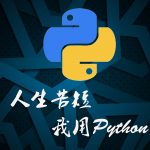字节社招面试总结--算法题篇
股票买卖 ( 头条 )
1. 买卖股票的最佳时机
给定一个数组,它的第 i 个元素是一支给定股票第 i 天的价格。
如果你最多只允许完成一笔交易(即买入和卖出一支股票),设计一个算法来计
算你所能获取的最大利润。
注意你不能在买入股票前卖出股票。
示例 1 :
输入 : [ 7 , 1 , 5 , 3 , 6 , 4 ]
输出 : 5
解释: 在第 2 天(股票价格 = 1 )的时候买入,在第 5 天(股票价格 = 6 )的
时候卖出,最大利润 = 6 - 1 = 5 。
注意利润不能是 7 - 1 = 6 , 因为卖出价格需要大于买入价格。
示例 2 :
输入 : [ 7 , 6 , 4 , 3 , 1 ]
输出 : 0
解释: 在这种情况下,没有交易完成, 所以最大利润为 0 。
题解
纪录两个状态, 一个是最大利润, 另一个是遍历过的子序列的最小值。知道之前
的最小值我们就可以算出当前天可能的最大利润是多少
class Solution {
publicintmaxProfit ( int [] prices) {
// 7 , 1 , 5 , 3 , 6 , 4
int maxProfit = 0 ;
int minNum= Integer.MAX_VALUE;
for ( int i= 0 ;i <prices.length; i++) {
if (Integer.MAX_VALUE!=minNum&&prices[i]-minNum>maxProfit)
{
maxProfit =prices[i] - minNum;
}
if (prices[i] <minNum) {
minNum= prices[i];
}
}
return maxProfit;
}
}
2. 买卖股票的最佳时机 II
这次改成股票可以买卖多次, 但是你必须要在出售股票之前把持有的股票卖掉。
示例 1 :
输入:[ 7 , 1 , 5 , 3 , 6 , 4 ]输出: 7 解释:在第 2 天(股票价格 = 1 )的时候买入,在第 3 天
(股票价格 = 5 )的时候卖出,这笔交易所能获得利润 = 5 - 1 = 4 。
随后,在第 4 天(股票价格 = 3 )的时候买入,在第 5 天(股票价格 = 6 )的时候
卖出,这笔交易所能获得利润 = 6 - 3 = 3 。
示例 2 :
输入:[ 1 , 2 , 3 , 4 , 5 ]输出: 4 解释:在第 1 天(股票价格= 1 )的时候买入,在第 5 天(股
票价格 = 5 )的时候卖出,这笔交易所能获得利润 = 5 - 1 = 4 。
注意你不能在第 1 天和第 2 天接连购买股票,之后再将它们卖出。
因为这样属于同时参与了多笔交易,你必须在再次购买前出售掉之前的股票。
示例 3 :
输入 : [ 7 , 6 , 4 , 3 , 1 ]
输出 : 0
解释 : 在这种情况下 , 没有交易完成 , 所以最大利润为 0 。
题解
由于可以无限次买入和卖出。我们都知道炒股想挣钱当然是低价买入高价抛出,
那么这里我们只需要从第二天开始,如果当前价格比之前价格高,则把差值加入
利润中,因为我们可以昨天买入,今日卖出,若明日价更高的话,还可以今日买
入,明日再抛出。以此类推,遍历完整个数组后即可求得最大利润。
class Solution {
publicintmaxProfit ( int [] prices) {
// 7 , 1 , 5 , 3 , 6 , 4
int maxProfit = 0 ;
for ( int i= 0 ;i <prices.length; i++) {
if (i != 0 && prices[i] -prices[i- 1 ]> 0 ){
maxProfit += prices[i] -prices[i- 1 ];
}
}
return maxProfit;
}
}
LRUcache( 头条、蚂蚁 )
题目
运用你所掌握的数据结构,设计和实现一个 LRU(最近最少使用)缓存机制。它
应该支持以下操作: 获取数据 get 和 写入数据 put 。
获取数据 get(key)- 如果密钥 (key) 存在于缓存中,则获取密钥的值(总是正
数),否则返回 - 1 。
写入数据 put(key,value)-如果密钥不存在,则写入其数据值。当缓存容量达到
上限时,它应该在写入新数据之前删除最近最少使用的数据值,从而为新的数据
值留出空间。
进阶:
你是否可以在 O( 1 ) 时间复杂度内完成这两种操作?
LRUCache cache = new LRUCache( 2 / 缓存容量 / );
cache.put( 1 , 1 );
cache.put( 2 , 2 );
cache. get ( 1 ); // 返回 1
cache.put( 3 , 3 ); // 该操作会使得密钥 2 作废
cache. get ( 2 ); // 返回 - 1 ( 未找到 )
cache.put( 4 , 4 ); // 该操作会使得密钥 1 作废
cache. get ( 1 ); // 返回 - 1 ( 未找到 )
cache. get ( 3 ); // 返回 3
cache. get ( 4 ); // 返回 4
题解
这道题在今日头条、快手或者硅谷的公司中是比较常见的,代码要写的还蛮多的,
难度也是hard级别。
最重要的是LRU 这个策略怎么去实现,
很容易想到用一个链表去实现最近使用的放在链表的最前面。
比如get一个元素,相当于被使用过了,这个时候它需要放到最前面,再返回值,
set同理。
那如何把一个链表的中间元素,快速的放到链表的开头呢?
很自然的我们想到了双端链表。
基于 HashMap 和 双向链表实现 LRU 的
整体的设计思路是,可以使用 HashMap 存储 key,这样可以做到 save 和 get
key的时间都是 O( 1 ),而 HashMap 的 Value 指向双向链表实现的 LRU 的
Node 节点,如图所示。
LRU 存储是基于双向链表实现的,下面的图演示了它的原理。其中 head 代表
双向链表的表头,tail 代表尾部。首先预先设置 LRU 的容量,如果存储满了,
可以通过 O( 1 ) 的时间淘汰掉双向链表的尾部,每次新增和访问数据,都可以通
过 O( 1 )的效率把新的节点增加到对头,或者把已经存在的节点移动到队头。
下面展示了,预设大小是 3 的,LRU存储的在存储和访问过程中的变化。为了
简化图复杂度,图中没有展示 HashMap部分的变化,仅仅演示了上图 LRU 双
向链表的变化。我们对这个LRU缓存的操作序列如下:
save ("key 1 ", 7 )
save ("key 2 ", 0 )
save ("key 3 ", 1 )
save ("key 4 ", 2 )
get ("key 2 ")
save ("key 5 ", 3 )
get ("key 2 ")
save ("key 6 ", 4 )
相应的 LRU 双向链表部分变化如下:
总结一下核心操作的步骤:
save(key,value),首先在 HashMap 找到 Key 对应的节点,如果节点存在,更
新节点的值,并把这个节点移动队头。如果不存在,需要构造新的节点,并且尝
试把节点塞到队头,如果LRU空间不足,则通过 tail 淘汰掉队尾的节点,同时
在 HashMap 中移除 Key。
get(key),通过 HashMap 找到 LRU 链表节点,因为根据LRU 原理,这个节点
是最新访问的,所以要把节点插入到队头,然后返回缓存的值。
privatestatic classDLinkedNode {
int key;
intvalue ;
DLinkedNodepre;
DLinkedNodepost;
}
*/***
* 总是在头节点中插入新节点.
*/
privatevoid addNode (DLinkedNodenode) {
node.pre =head;
node.post =head.post;head.post.pre =node;
head.post =node;
}
*/***
* 摘除一个节点.
*/
privatevoid removeNode (DLinkedNode node){
DLinkedNodepre= node.pre;
DLinkedNodepost= node.post;
pre.post =post;
post.pre =pre;
}
*/***
* 摘除一个节点 , 并且将它移动到开头
*/
privatevoid moveToHead (DLinkedNode node){
this .removeNode(node);
this .addNode(node);
}
*/***
* 弹出最尾巴节点
*/
private DLinkedNode popTail (){
DLinkedNoderes= tail.pre;
this .removeNode(res);
return res;
}
private HashMap<Integer,DLinkedNode>
cache = new HashMap<Integer,DLinkedNode>();
privateint count;
privateint capacity;
private DLinkedNodehead, tail;
publicLRUCache ( int capacity){
this .count= 0 ;
this .capacity =capacity;
head = new DLinkedNode();
head.pre =null;
tail = new DLinkedNode();
tail.post =null;head.post =tail;
tail.pre =head;
}
publicintget ( int key) {
DLinkedNodenode= cache. get (key);
if (node ==null) {return - 1 ; // cache 里面没有
}
//cache 命中 , 挪到开头
this .moveToHead(node);return node. value ;
}
publicvoidput ( int key, intvalue ) {
DLinkedNodenode= cache. get (key);
if (node ==null) {
DLinkedNodenewNode= new DLinkedNode();
newNode.key= key;
newNode. value = value ;
this .cache.put(key,newNode);
this .addNode(newNode);
++count;
if (count >capacity) {// 最后一个节点弹出
DLinkedNodetail= this .popTail();
this .cache. remove (tail.key);
count--;
}
} else {//cache 命中 , 更新 cache.
node. value = value ;
this .moveToHead(node);
}
}二叉树层次遍历 ( 头条 )
这个题目之前也讲过,Leetcode 102 题。
题目
给定一个二叉树,返回其按层次遍历的节点值。 (即逐层地,从左到右访问所
有节点)。
例如:
给定二叉树:[ 3 , 9 , 20 ,null,null, 15 , 7 ],
3
/\
9 20
/ \
15 7
返回其层次遍历结果:
[
[ 3 ],
[ 9 , 20 ],
[ 15 , 7 ]
]
题解
我们数据结构的书上教的层序遍历,就是利用一个队列,不断的把左子树和右子树
入队。但是这个题目还要要求按照层输出。所以关键的问题是:如何确定是在
同一层的。
我们很自然的想到:
如果在入队之前,把上一层所有的节点出队,那么出队的这些节点就是上一层的列
表。
由于队列是先进先出的数据结构,所以这个列表是从左到右的。
*/Definitionforabinarytreenode.*publicclassTreeNode{* int
val;* TreeNodeleft;* TreeNoderight;* TreeNode(intx){val
= x; }* }
*/ classSolution {
publicList levelOrder(TreeNoderoot) {
new LinkedList<>();
Listres =
if (root == null ) {
return** res;
}
LinkedList<TreeNode>queue = new LinkedList<>();
queue.add(root);
while (!queue.isEmpty()){
intsize =queue.size();
List<Integer> currentRes= new LinkedList<>();// 当前队列的大小就是上一层的节点个数 , 依次出队
while (size> 0 ){
TreeNode current= queue.poll();
if (current== null ){
continue ;
}
currentRes.add(current.val);// 左子树和右子树入队.
if (current.left!= null ){queue.add(current.left);
}
if (current.right != null ) {
queue.add(current.right);
}
size--;
}
res.add(currentRes);
}
return res;
}
}
这道题可不可以用非递归来解呢?
递归的子问题:遍历当前节点, 对于当前层, 遍历左子树的下一层层,遍历右子树
的下一层
递归结束条件: 当前层,当前子树节点是null
*/Definitionforabinarytreenode.*publicclassTreeNode{* int
val;* TreeNodeleft;* TreeNoderight;* TreeNode(intx){val
= x; }* }
*/ classSolution {
publicList levelOrder(TreeNoderoot) {
new LinkedList<>();
Listres =
if (root == null ) {
return res;
}
levelOrderHelper(res, root, 0 );
return** res;
}
/* @param depth 二叉树的深度 */
private void levelOrderHelper(Listres,TreeNoderoot,
intdepth){
if (root == null ) {
return ;
}
if (res.size() <= depth){// 当前层的第一个节点 , 需要 new 一个 list 来存当前层.
res.add( new LinkedList<>());}
//depth 层 , 把当前节点加入
res. get (depth).add(root.val);// 递归的遍历下一层.
levelOrderHelper(res, root.left,depth + 1 );
levelOrderHelper(res, root.right,depth + 1 );
}
}
二叉树转链表 ( 快手 )
这是Leetcode 104 题。
给定一个二叉树,原地将它展开为链表。
例如,给定二叉树
1
/\
2 5
/ \ \
3 4 6
将其展开为:
1 \ 2 \ 3 \ 4 \ 5 \ 6
这道题目的关键是转换的时候递归的时候记住是先转换右子树,再转换左子树。
所以需要记录一下右子树转换完之后链表的头结点在哪里。注意没有新定义一个
next指针,而是直接将right 当做next指针,那么Left指针我们赋值成null就可
以了。
class Solution {
private TreeNodeprev = null ;
publicvoidflatten (TreeNoderoot) {
if (root == null ) return ;flatten(root.right); // 先转换右子树
flatten(root.left);root.right= prev; // 右子树指向链表的头
root.left = null ; // 把左子树置空
prev =root; // 当前结点为链表头
}
}
用递归解法,用一个stack 记录节点,右子树先入栈,左子树后入栈。
class Solution {
publicvoidflatten (TreeNoderoot) {
if (root ==null) return ;
Stackstack = new Stack();
stack.push(root);
while (!stack.isEmpty()){
TreeNode current= stack.pop();
if (current.right !=null) stack.push(current.right);
if (current.left!=null) stack.push(current.left);
if (!stack.isEmpty()) current.right =stack.peek();
current.left = null;
}
}
}
二叉树寻找最近公共父节点 ( 快手 )
Leetcode 236 二叉树的最近公共父亲节点
题解
从根节点开始遍历,如果node 1 和node 2 中的任一个和root匹配,那么root
就是最低公共祖先。如果都不匹配,则分别递归左、右子树,如果有一个 节点
出现在左子树,并且另一个节点出现在右子树,则root就是最低公共祖先.如果
两个节点都出现在左子树,则说明最低公共祖先在左子树中,否则在右子树。
publicclass Solution {
publicTreeNode lowestCommonAncestor( TreeNode root, TreeNode p,
TreeNode q){
// 发现目标节点则通过返回值标记该子树发现了某个目标结点
if (root==null|| root == p|| root == q) return root;// 查看左子树中是否有目标结点,没有为 null
TreeNode left =lowestCommonAncestor(root. left ,p,q);// 查看右子树是否有目标节点,没有为 null
TreeNode right =lowestCommonAncestor(root. right , p, q);// 都不为空,说明做右子树都有目标结点,则公共祖先就是本身
if ( left !=null&& right !=null) return root;// 如果发现了目标节点,则继续向上标记为该目标节点
returnleft == null? right : left ;
}
}
数据流求中位数 ( 蚂蚁 )
面了蚂蚁中台的团队,二面面试官根据汇报层级推测应该是P 9 级别及以上,在美
国面我,面试风格偏硅谷那边。题目是hard难度的,leetcode 295 题。
这道题目是Leetcode的hard难度的原题。给定一个数据流,求数据流的中位数,
求中位数或者topK的问题我们通常都会想用堆来解决。
但是面试官又进一步加大了难度,他要求内存使用很小,没有磁盘,但是压榨空
间的同时可以忍受一定时间的损耗。且面试官不仅要求说出思路,要写出完整可
经过大数据检测的productioncode。
先不考虑内存
不考虑内存的方式就是Leetcode 论坛上的题解。
基本思想是建立两个堆。左边是大根堆,右边是小根堆。
如果是奇数的时候,大根堆的堆顶是中位数。
例如:[ 1 , 2 , 3 , 4 , 5 ]
大根堆建立如下:
3
/ \
1 2
小根堆建立如下:
4
/
5
偶数的时候则是最大堆和最小堆顶的平均数。
例如:[ 1 , 2 , 3 , 4 ]
大根堆建立如下:
2
/
1
小根堆建立如下
3
/
4
然后再维护一个奇数偶数的状态即可求中位数。
publicclass MedianStream {
private PriorityQueue leftHeap = new PriorityQueue<>( 5 ,
Collections.reverseOrder());
private PriorityQueue rightHeap = new PriorityQueue<>( 5 );
private booleaneven= true;
publicdouble getMedian () {
if (even) {
return (leftHeap.peek() +rightHeap.peek()) / 2. 0 ;
} else {
return leftHeap.peek();
}
}
publicvoidaddNum ( int num) {
if (even) {
rightHeap.offer(num);
int rightMin = rightHeap.poll();
leftHeap.offer(rightMin);
} else {
leftHeap.offer(num);
int leftMax= leftHeap.poll();
rightHeap.offer(leftMax);
}
System. out .println(leftHeap);
System. out .println(rightHeap);// 奇偶变换.
even =!even;
}
}
压榨内存
但是这样做的问题就是可能内存会爆掉。如果你的流无限大,那么意味着这些数
据都要存在内存中,堆必须要能够建无限大。如果内存必须很小的方式,用时间
换空间。
流是可以重复去读的, 用时间换空间;
可以用分治的思想,先读一遍流,把流中的数据个数分桶;
分桶之后遍历桶就可以得到中位数落在哪个桶里面,这样就把问题的范围
缩小了。
publicclass Median {
privatestatic int BUCKET_SIZE = 1000 ;
privateint left= 0 ;
privateint right =Integer.MAX_VALUE;// 流这里用 int[] 代替
publicdouble findMedian ( int [] nums) {// 第一遍读取 stream 将问题复杂度转化为内存可接受的量级.
int [] bucket = new int [BUCKET_SIZE];
int step =(right -left) / BUCKET_SIZE;
boolean even = true ;
int sumCount = 0 ;
for ( int i= 0 ;i <nums.length;i++){
int index =nums[i]/ step;
bucket[index] =bucket[index]+ 1 ;
sumCount++;
even =!even;
}// 如果是偶数 , 那么就需要计算第 topK 个数
// 如果是奇数 , 那么需要计算第 topK 和 topK+ 1 的个数.
int topK =even? sumCount / 2 :sumCount/ 2 + 1 ;
int index = 0 ;
int indexBucketCount= 0 ;
for (index= 0 ;index < bucket.length; index++) {
indexBucketCount= bucket[index];
if (indexBucketCount>= topK){// 当前 bucket 就是中位数的 bucket.
break ;
}
topK -=indexBucketCount;
}// 划分到这里其实转化为一个 topK 的问题 , 再读一遍流.
if (even &&indexBucketCount== topK){
left =index * step;
right =(index + 2 )* step;
return helperEven(nums, topK);// 偶数的时候 , 恰好划分到在左右两个子段中.
// 左右两段中 [topIndex-K +(topIndex-K + 1 )]/ 2.
} elseif (even){
left =index * step;
right =(index + 1 )* step;
return helperEven(nums, topK);// 左边 [topIndex-K+ (topIndex-K+ 1 )] / 2
} else {
left =index * step;
right =(index + 1 )* step;
return helperOdd(nums, topK);// 奇数 , 左边 topIndex-K
}
}
}
这里边界条件我们处理好之后,关键还是helperOdd 和 helperEven这两个函数
怎么去求topK的问题. 我们还是转化为一个topK的问题,那么求top-K和
top(K+ 1 )的问题到这里我们是不是可以用堆来解决了呢? 答案是不能,考虑极端
情况。
中位数的重复次数非常多
eg:
[ 100 , 100 , 100 , 100 , 100 ...]( 1000 亿个 100 )
你的划分恰好落到这个桶里面,内存同样会爆掉。
再用时间换空间
假如我们的划分bucket大小是 10000 ,那么最大的时候区间就是 20000 。(对应上
面的偶数且落到两个分桶的情况)
那么既然划分到某一个bucket了,我们直接用数数字的方式来求topK 就可以了,
用堆的方式也可以,更高效一点,其实这里问题规模已经划分到很小了,两种方法
都可以。
我们选用TreeMap这种数据结构计数。然后分奇数偶数去求解。
privatedouble helperEven ( int [] nums, int topK) {
TreeMap<Integer,Integer> map= new TreeMap<>();
for ( int i= 0 ;i <nums.length;i++){
if (nums[i]>= left&& nums[i] <=right) {
if (!map.containsKey(nums[i])) {
map.put(nums[i], 1 );
} else {
map.put(nums[i],map.get(nums[i])+ 1 );
}
}
}
int count = 0 ;
int kNum =Integer.MIN_VALUE;
int kNextNum = 0 ;
for (Map.Entry<Integer, Integer>entry : map.entrySet()) {
int currentCountIndex = entry.getValue();
if (kNum !=Integer.MIN_VALUE) {
kNextNum =entry.getKey();
break ;
}
if (count +currentCountIndex==topK) {
kNum =entry.getKey();
} elseif (count+ currentCountIndex >topK) {
kNum =entry.getKey();
kNextNum =entry.getKey();
break ;
} else {
count += currentCountIndex;
}
}return (kNum + kNextNum)/ 2. 0 ;
}
privatedouble helperOdd ( int [] nums, int topK){
TreeMap<Integer,Integer> map= new TreeMap<>();
for ( int i= 0 ;i <nums.length;i++){
if (nums[i]>= left&& nums[i] <=right) {
if (!map.containsKey(nums[i])) {
map.put(nums[i], 1 );
} else {
map.put(nums[i],map.get(nums[i])+ 1 );
}
}
}
int count = 0 ;
int kNum =Integer.MIN_VALUE;
for (Map.Entry<Integer, Integer>entry : map.entrySet()) {
int currentCountIndex = entry.getValue();
if (currentCountIndex + count>=topK) {
kNum =entry.getKey();
break ;
} else {
count += currentCountIndex;
}
}
return kNum;
}至此,我觉得算是一个比较好的解决方案。
This is a offline tool, your data stays locally and is not send to any server!
[Feedback & Bug Reports](









